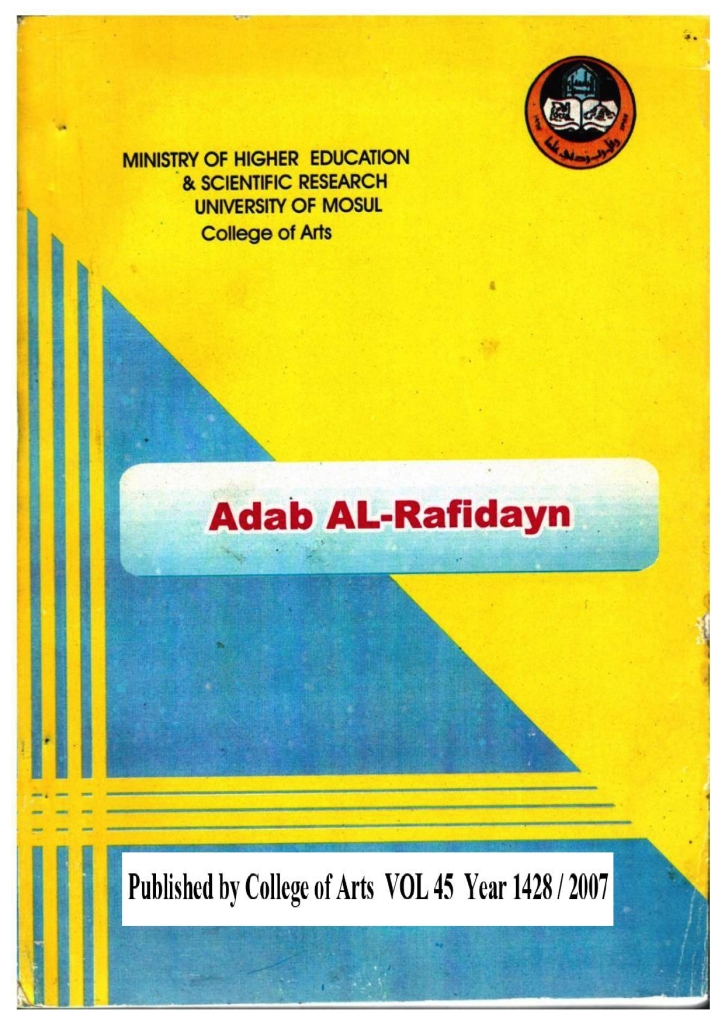Abstract
The story of the birth and early life of Moses who is supposed to have lived in the thirteenth century B.C. is a well known story both in the Old Testament and the Holey Qurān. But the discovery of cuneiform tablets that record a simillar story attributed to King Sargon of Akkad has raised many arguments since Sargon lived in the 24th century B.C., i.e., more than nine centeries before Moses. Many scholars, some of them are muslims, believe that the authers of the Old Testament have borrowed sargon’s story and at tributed it to their prophet Moses during their captivity in Babylonia in the sixth century B.C. Consequently the story of the Holey Qurān was borrowed from the Old Testament.
It is the aim of this paper to explain the reasons behind the resemblence between the stories. It is beyond doubt that the story as is told in the Holey Qurān is the real and exact story and that of the Old Testament is related to the same story but was written by the authers of the Old Testament six centeries after the life of Moses.
As for the story of Sargon it is believed that it was borrowed by the Assyrians during the seventh centuty B.C. from jews who lived in Palestine at that time and was attributed to Sargon of Akkad, one of their famous previous personalaties although he lived several centuries before that. This is proved by the fact that the date of cuneiform tablets which record Sargons’ story belong to the seventh and sixth centuries B.C. and not to the time of Sargon himself.
Moreover, even if it was supposed that Sargon’s story was a real one it does not saise any question as it was customary in those days for unwanted children, whether in Egypt or Iraq, to be thrown in the river in almost the same manner that is told in both stories.
It is the aim of this paper to explain the reasons behind the resemblence between the stories. It is beyond doubt that the story as is told in the Holey Qurān is the real and exact story and that of the Old Testament is related to the same story but was written by the authers of the Old Testament six centeries after the life of Moses.
As for the story of Sargon it is believed that it was borrowed by the Assyrians during the seventh centuty B.C. from jews who lived in Palestine at that time and was attributed to Sargon of Akkad, one of their famous previous personalaties although he lived several centuries before that. This is proved by the fact that the date of cuneiform tablets which record Sargons’ story belong to the seventh and sixth centuries B.C. and not to the time of Sargon himself.
Moreover, even if it was supposed that Sargon’s story was a real one it does not saise any question as it was customary in those days for unwanted children, whether in Egypt or Iraq, to be thrown in the river in almost the same manner that is told in both stories.
Keywords
stories of the prophets
The Old Testament
the Qur’an
Abstract
قصة ولادة موسى الذی من المفترض أنه عاش فی القرن الثالث عشر قبل المیلاد وبدایات حیاته. هی قصة معروفة فی کل من العهد القدیم والقرآن الکریم. لکن اکتشاف الألواح المسماریة التی تسجل قصة مشابهة منسوبة إلى الملک سرجون ملک العقاد أثار العدید من الحجج منذ أن عاش سرجون فی القرن الرابع والعشرین قبل المیلاد ، أی أکثر من تسعة مراکز قبل موسى. یعتقد العدید من العلماء ، ومنهم من المسلمین ، أن مؤلفی العهد القدیم قد استعاروا قصة سرجون وحیوها لنبیهم موسى أثناء أسرهم فی بابل فی القرن السادس قبل المیلاد. وبالتالی فإن قصة القرآن الکریم مستعارة من العهد القدیم.
تهدف هذه الورقة إلى شرح أسباب التشابه بین القصص. مما لا شک فیه أن القصة کما رویت فی القرآن الکریم هی القصة الحقیقیة والدقیقة وأن قصة العهد القدیم مرتبطة بنفس القصة ولکن کتبها مؤلفو العهد القدیم ستة مراکز بعد حیاة موسى.
أما بالنسبة لقصة سرجون فیعتقد أنها استعارها الآشوریون فی القرن السابع قبل المیلاد. من الیهود الذین عاشوا فی فلسطین فی ذلک الوقت ونسبوا إلى سرجون العقاد ، أحد الشخصیات الشهیرة السابقة لهم رغم أنه عاش قبل ذلک بعدة قرون. ثبت ذلک من خلال حقیقة أن تاریخ الألواح المسماریة التی تسجل قصة سرجونز تعود إلى القرنین السابع والسادس قبل المیلاد. ولیس فی زمن سرجون نفسه.
علاوة على ذلک ، حتى لو کان من المفترض أن قصة سرجون کانت قصة حقیقیة ، فإنها لا تطرح أی سؤال حیث کان من المعتاد فی تلک الأیام أن یُلقى الأطفال غیر المرغوب فیهم ، سواء فی مصر أو العراق ، فی النهر بالطریقة نفسها تقریبًا. روى فی کلتا القصتین.
تهدف هذه الورقة إلى شرح أسباب التشابه بین القصص. مما لا شک فیه أن القصة کما رویت فی القرآن الکریم هی القصة الحقیقیة والدقیقة وأن قصة العهد القدیم مرتبطة بنفس القصة ولکن کتبها مؤلفو العهد القدیم ستة مراکز بعد حیاة موسى.
أما بالنسبة لقصة سرجون فیعتقد أنها استعارها الآشوریون فی القرن السابع قبل المیلاد. من الیهود الذین عاشوا فی فلسطین فی ذلک الوقت ونسبوا إلى سرجون العقاد ، أحد الشخصیات الشهیرة السابقة لهم رغم أنه عاش قبل ذلک بعدة قرون. ثبت ذلک من خلال حقیقة أن تاریخ الألواح المسماریة التی تسجل قصة سرجونز تعود إلى القرنین السابع والسادس قبل المیلاد. ولیس فی زمن سرجون نفسه.
علاوة على ذلک ، حتى لو کان من المفترض أن قصة سرجون کانت قصة حقیقیة ، فإنها لا تطرح أی سؤال حیث کان من المعتاد فی تلک الأیام أن یُلقى الأطفال غیر المرغوب فیهم ، سواء فی مصر أو العراق ، فی النهر بالطریقة نفسها تقریبًا. روى فی کلتا القصتین.
Keywords
العهد القدیم
القران
قصص النبیاء
